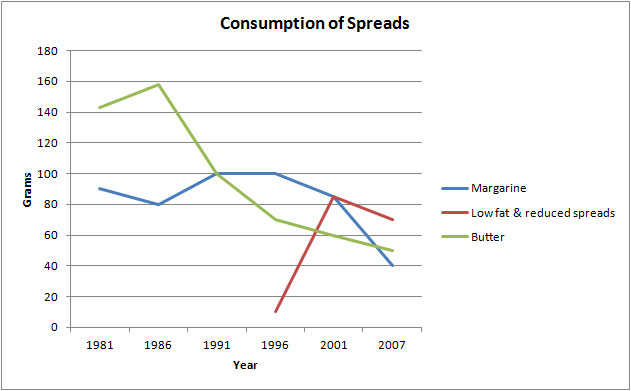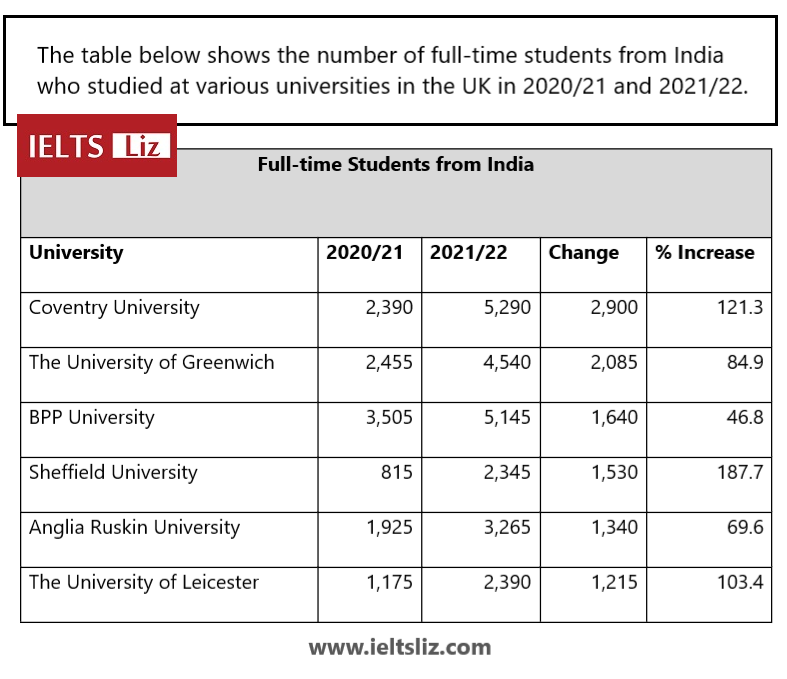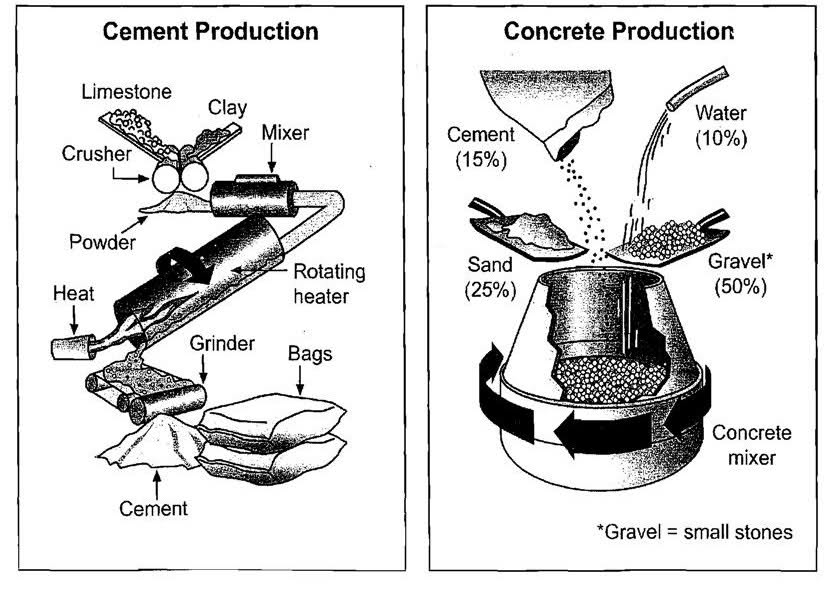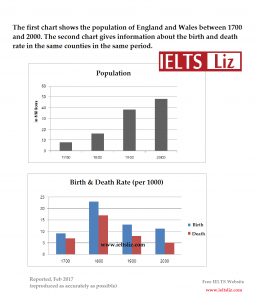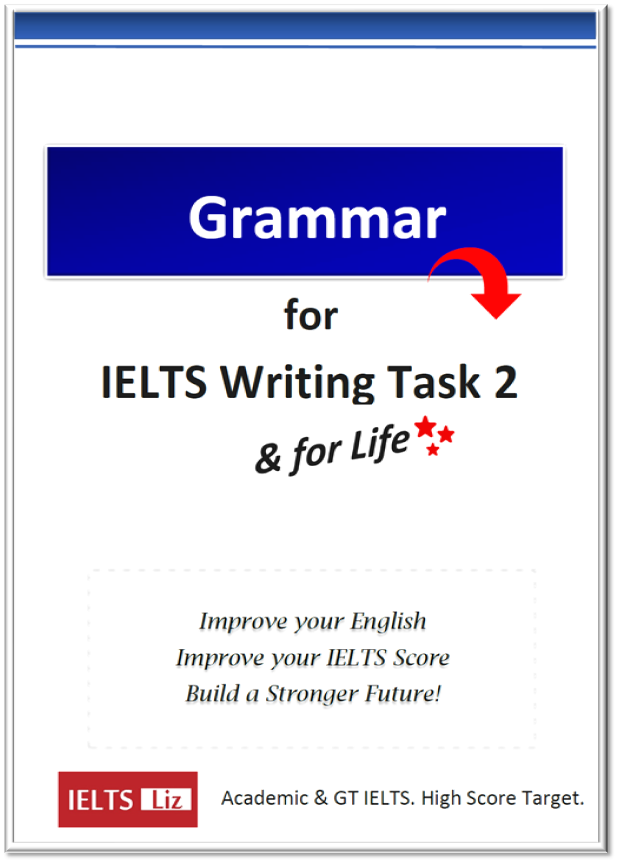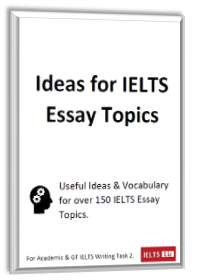This model line graph for IELTS is estimated at band score 9. The model answer below is for IELTS writing task 1 academic paper. Use this sample writing as a template for structure, key features and language for any IELTS line graph. There are also some tips given below to guide you and help you understand how to describe this type of graph.
Line graphs will typically have between two or five lines. However, it is possible to have more than five lines. Depending on how many lines you have, you’ll need to decide how much data you present in your report. See the tips at the bottom of the page.
IELTS Line Graphs with Model Answers
IELTS Line Graph 1
This line graph is typical of IELTS writing task 1. It shows three lines and one of the lines doesn’t have any data for the first few years. See the model answer below to learn how to tackle this task.
The graph below shows the consumption of three spreads from 1981 to 2007.
IELTS Line Graph Model Answer
The line graph illustrates the amount of three kinds of spreads (margarine, butter, and low fat and reduced spreads) which were consumed from 1981 to 2007. Units are measured in grams.
Overall, the consumption of margarine and butter decreased over the period given, while for low fat and reduced spreads, it rose. At the start of the period, butter was the most popular spread. Margarine was the most widely consumed in the middle of the period but, by the end, low fat and reduced spreads was most popular.
With regards to the amount of butter used, it began at around 140 grams and then peaked at 160 grams in 1986 before falling dramatically to about 50 grams in the last year. Likewise, approximately 90 grams of margarine was eaten in the first year, after which the figure fluctuated slightly and dropped to a low of 40 grams in 2007.
On the other hand, the consumption of low fats and reduced spreads only started in 1996 at about 10 grams. This figure, which reached a high of just over 80 grams five years later, fell slightly in the final years to approximately 70 grams in 2007.
IELTS Line Graph 2: Five Lines
Essential tip for a line graph with many lines:
- Don’t get lost in too much detail. Going beyond 200 words is very rare. Most tasks require only 170 and 190 words. Getting lost in detail and writing too much will give you a low score for Task Response, which counts for 25% of your marks. See this page: Band scores, Marking & Tips for bands 5 to 8.
Line Graph Model Answer
The line graph illustrates how many weekly hospital admissions there were in Fortsmith, Adlin, Stanton, Bardley and Oxley, which are hospitals located in a European country, between 2004 and 2018.
Overall, for most of the period given Bardley had the most admissions, while Stanton had the least. Oxley was the only hospital to see a decline in admissions and Fortsmith was unique in that their admission figures remained relatively stable over the period. Admissions to all other hospitals increased during the years given.
Admissions to Oxley hospital started at just under 250 a week in 2004 but more than halved by the final year (just over 100 admissions). Fortsmith weekly hospital admissions fluctuated at around 200 for the whole period.
On the other hand, the number of people admitted to Adlin hospital rose dramatically from just over 100 in the first year to 250 by 2018. Likewise, Bardley also saw a rise from 200 to peak at over 250, the highest for any hospital. In terms of Stanton hospital, only approximately 70 people were admitted in 2008 and this gradually climbed to slightly over 150 in 2018.
Words = 187
Tips for IELTS Line Graphs
Below are key steps for tackling an IELTS line graph:
- Paraphrase the line graph information for your introduction.
- Add axis information to your introduction if needed, such as categories or units.
- Put main trends and any other key features in an overall statement. The overview is the most important statement in your writing task 1. One sentence for an overview usually isn’t enough.
- Organise body paragraphs logically because you are being marked on this. Make sure to always have two body paragraphs (three occasionally). Decide which lines show trends that should be grouped together.
- Make sure each sentence in the body paragraphs has numbers and dates to support it. This is vital for Task Response.
- Ensure all data is accurate. If you are not sure the number is precise, write “about” or “approximately”.
- Use a range of linking words. Try not to repeat them.
- Aim for around 180 words for writing task 1. Try not to write over 200 words. More does not mean better.
- Line graphs have specific vocabulary that you must showcase. Learn nouns, adjectives, verbs and adverbs carefully: Line Graph Vocabulary
RECOMMENDED FOR YOU – IELTS WRITING TASK 1
Click below:
- Line Graph Vocabulary (Essential Learning !!!)
- Line Graph & Bar Chart Model Answer (Multiple Task)
- Line Graph Exercise (with model answer)
- Sample Practice Charts (for your practice at home)
- ALL MODEL ANSWERS & TIPS FOR IELTS WRITING TASK 1
.
